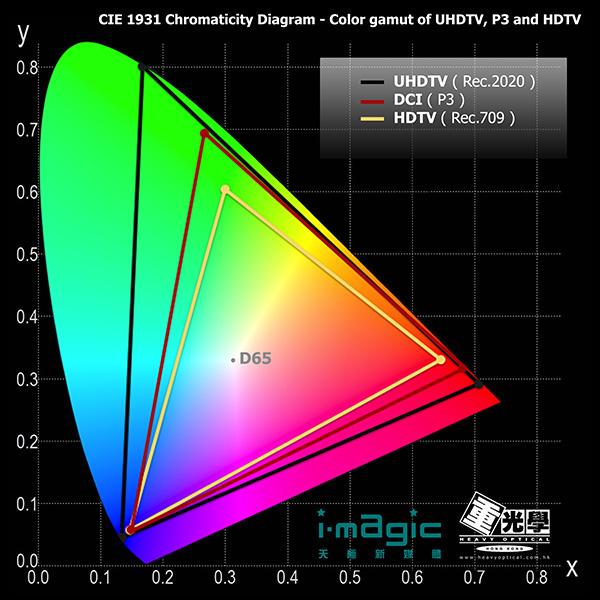Ultra HD, Part II: Is it Soup Yet?

True or False: Today’s HDMI 2.0 is ready for the everything Ultra HD might require.
False. A specification of HDMI 2.0 does not always mean full capability HDMI 2.0. At least not yet.
Full implementation of HDMI 2.0 involves not only compatibility with 4K at up to 60Hz (frames per second or fpstoday’s 4K, what little of it there is as yet, tops out at 30fps), but also the ability to handle other advances being considered for full, future implementation of Ultra HD. Most of these enhancements involve advanced color capabilities and are not yet included in any of the 4K material available to date.
Technically, full implementation of HDMI 2.0 requires that the HDMI input pass data at a rate of 18 gigabits per second. That will allow it to handle all of the current and anticipated features of Ultra HD. But the more limited form of HDMI 2.0 passes only 10.2 Gb/sec. This is sufficient for 60p, but not for the other advanced UHD features. Some 4K sets may be ready now for all of these pending developments, but many are limited to the 10.2 Gb/sec data rate. You won't find this information in the spec sheet.
True or False: Manufacturers will certainly inform us if full HDMI 2.0 is not present in their sets or other 4K-compatible devices (such as AV receivers).
False. Manufacturers are traditionally reluctant to talk about things their products won’t do. We’ve already had questions about HDMI 2.0 compatibility deflected with blather about things like x.v.Color.
True or False: But x.v.Color could be a big player in future Ultra HD developments.
False. x.v.Color (also called xvYCC) was a system developed to expand the displayable colors without making additional demands on the transmission pipeline. It is not, strictly speaking, a defined color gamut, but merely a means to expand the color beyond the existing HD color gamut standard, REC709 (B.T.709). It was championed most strongly by Sony and included in the HDMI 1.3 specification. But to use it properly you need both a source encoded with it and a display that can recognize it. It has never become a big player in the display business, partly because the color space conversions required to make it compatible in all applications could produce unpredictable results (results not always in line with the intentions of the colorist who made the transfer and director who approved it).
Apart from being incorporated in a few consumer camcorders, Sony’s “Mastered in 4K” discs, and some HDTVs, it’s now something of a technological dinosaur. The color enhancements we hear talked about for Ultra HD include a wider color gamut, but not x.v.Color.
True or False: What’s the big deal about future compatibility. When the time comes, I can just download a firmware update to add all these new capabilities to the set.
False: We’ve become so accustomed to fixing things with firmware updates that we think they’re a cure-all. It’s very possible that adding these future capabilities will mean major hardware changesand, possibly,a new set.
True or False: So will that mean “Goodbye boat anchor, hello new TV?”
Falseor at least we hope so. Predicting the future in our fast-moving tech universe is dicey, but hopefully manufacturers building today’s sets are aware of the need for backward compatibility. Orphaning millions of expensive 4K sets in two or three years would be a PR nightmare. One possible route could be an outboard converter box (or cable, satellite, and perhaps a future 4K blu-ray player) that will perform that task. That is, when the advanced color sources arrive, your current set will still display a good 4K image, but the advanced color also present in the source will simply be scaled back to fit the set’s capabilities. You won’t see the new color, but will merely “meet the new color, same as the old color.” Such compatibility must also be a major item on the agenda for finalizing the advanced color gamut for Ultra HD. The leading candidate at present is the DCI (P3) (Digital Cinema Initiative) gamut, shown in the diagram above. While there are proponents of the even wider gamut (Rec.2020, also shown), it might not be possible to achieve this with current video technology. The red-green axis for Rec.2020 also lies at the edge of the average visible spectrum for humans, and not everyone has the same visual acuity to colors at the extreme of that spectrum.
- Log in or register to post comments
























































